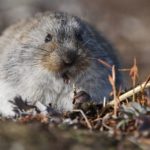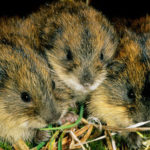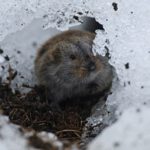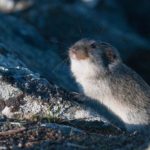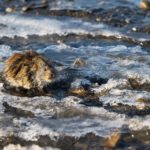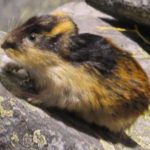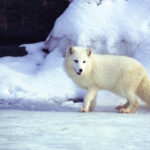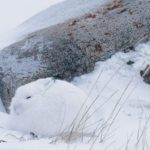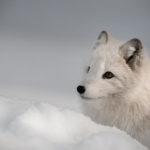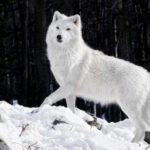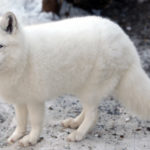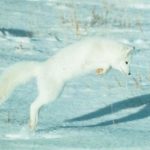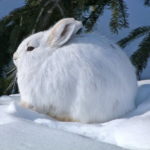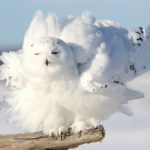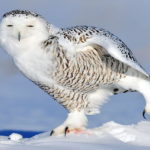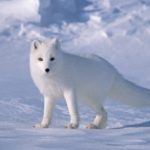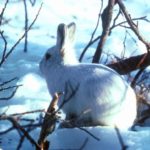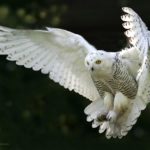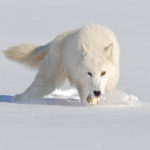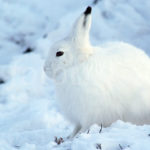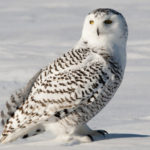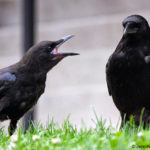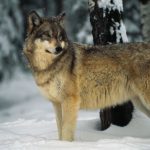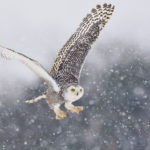Lemmings – Description, Habitats, Lifestyle and Types
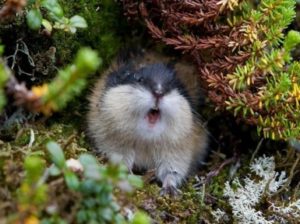 Lemmings are small animals similar to mice, the size of which reaches 10-13 cm. They have a motley coat, sometimes with gray-brown stains. The appearance of lemmings is very funny: after having fed up, they noticeably get fat. In winter, their coat acquires a light color.
Lemmings are small animals similar to mice, the size of which reaches 10-13 cm. They have a motley coat, sometimes with gray-brown stains. The appearance of lemmings is very funny: after having fed up, they noticeably get fat. In winter, their coat acquires a light color.
These animals are very voracious; an adult lemming eats twice as much as it weighs per day. Usually they feed all day, sometimes at night, annually destroying about 50 kilograms of vegetation.
Description of lemmings
There are small animals in the Arctic that have adapted to the harsh conditions of the Arctic and seem to feel quite comfortable – these are lemmings. Many Russians do not even know who they are, because they almost never occur in central Russia. Lemmings are small rodents from the hamster family. Outwardly, they resemble mice, although they are their very distant relatives.
Despite their cute appearance, these animals often show aggression, even to their relatives. They like to dig individual minks, for which they can even fight with unsolicited guests. By the way, seeing a man, lemmings, even having a very small size compared to him, contrary to logic, are not afraid, but begin to defend their territory. In the order of things – hiss, and in some cases, and rush.
Habitats and lifestyle
Lemmings live in the Arctic and Subarctic tundra, starting from the eastern coast of the White Sea in the west and to the Bering Strait in the east – the northern regions of America, the islands of the Arctic Ocean, Franz Josef Land, Wrangel Island, on the Taimyr Peninsula. They prefer the moss tundra, where dwarf birch and willow grow, rocky tundra, slopes of the watersheds, swampy peat and sedge-hummock places, except for lichen tundra.
Lemmings are active all year round. They are herbivores, feed on different berries, shoots, roots and grains, and at the same time they themselves are food for polar foxes, as well as for arctic foxes, buzzards and especially polar owls, who prefer lemmings to any other prey.
Lemmings are lonely animals. Separate individuals secrete certain areas and protect them from neighboring relatives. During periods of large numbers, they are a real disaster for agriculture in the northern regions. They make seasonal raids on pastures, where they clean up sedges, mosses, shrubs, which are necessary for feeding deer and other domestic animals.
For the winter they arrange nests on the ground under the snow. At this time, they feed on the basal parts of plants that dig out from under the snow. They often store food for future use, arranging storage near their nest. In addition, they constantly crawl to the surface in search of food. This is especially evident in the dark. By the way, it is during night feeding that lemmings become prey for the polar owl that hunts only at night.
Types of Lemmings
In our country, several types of lemmings are widespread: forest, Norwegian, Siberian, Amur, ungulate, and Vinogradov lemmings. In general, they have only slight differences in color and body length. The largest of them are Vinogradov’s lemmings, they reach 17 cm – these are the largest of all small rodents.
Forest lemming (Myopus schisticolor) – has a body size of about 8-13 cm; weight up to 45 g. Color black and gray, with brown spots on the back. It lives in the taiga from Scandinavia to Kamchatka. Prefers coniferous and mixed forests with copious moss. It feeds mainly on mosses, berries and roots. He makes burrows in moss bumps, among the roots of trees, or among stones covered with moss. Females bring cubs twice a year, 4-6 each. They live 1-2 years.
Norwegian leming (Lemmus lemmus). Size up to 15 cm. Color mottled, black strip along the back of yellow-brown color. It lives in the mountain tundra in Scandinavia and on the Kola Peninsula. The burrow does not dig, usually settles in natural shelters under the roots of trees, among stones and moss bumps. It feeds on reindeer moss, sedge, cereals, berries. The female is brought in 3-4 litters to 7 cubs.
Siberian Lemming (Lemmus sibiricus). Body length up to 16 cm, weight up to 130 g. Color yellow, black stripe along the back; in winter, the color does not change. It lives in the tundra of Russia from the Northern Dvina to Kolyma and on the islands of the Arctic Ocean. It feeds on mosses, sedges and cotton grass. In winter, branches and roots of tundra shrubs. In winter he lives under the snow, in nests which he makes of leaves and branches. For a year, the female brings 4-5 litters, each up to 12 cubs. It is the main prey for arctic fox, ermine, polar owl. A carrier of pseudotuberculosis and hemorrhagic fever.
